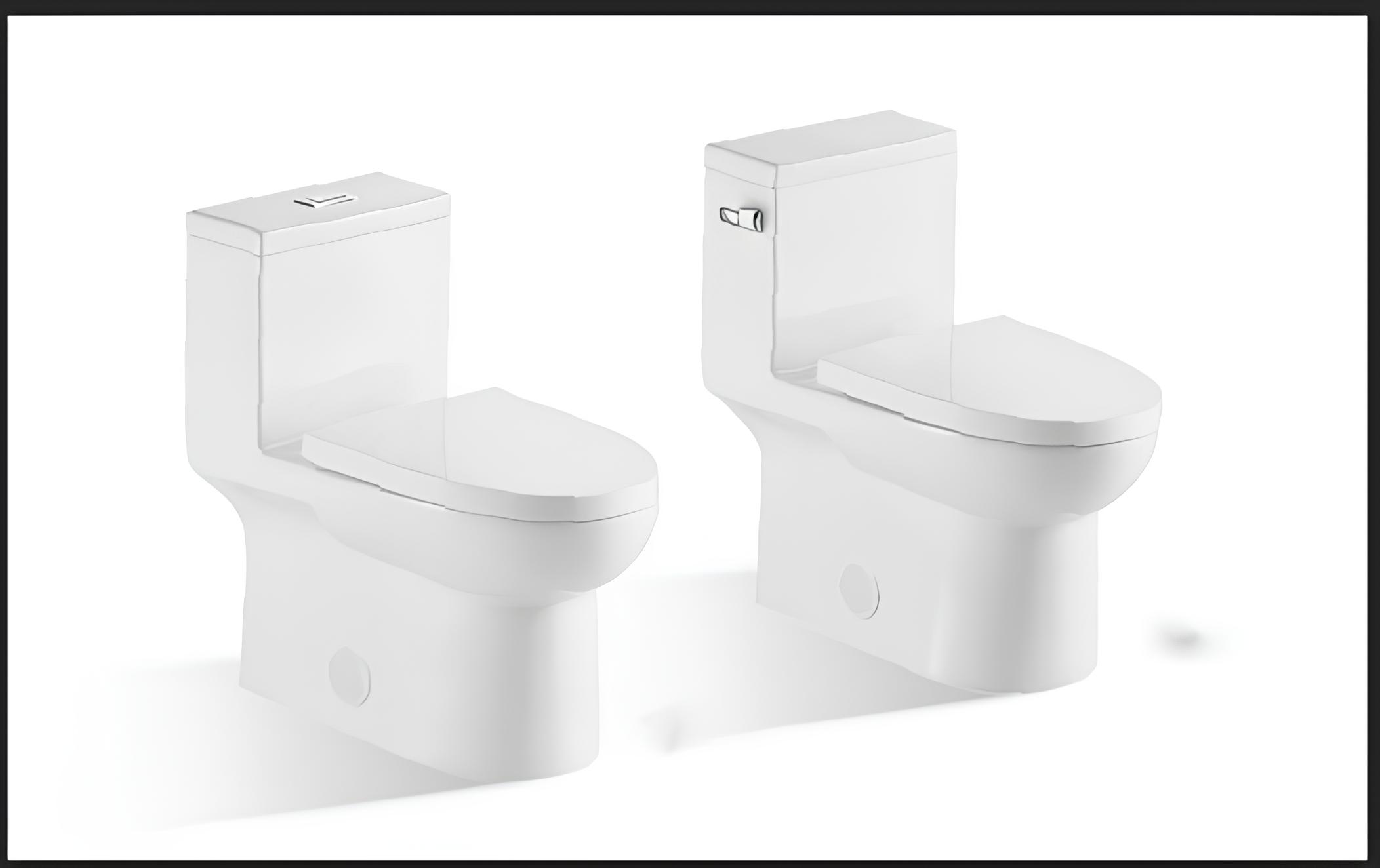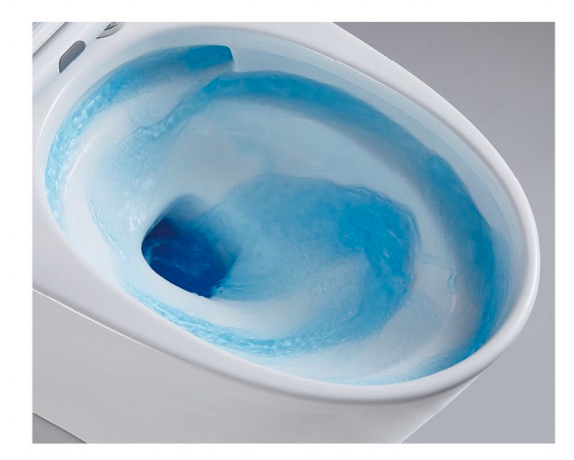When choosing a dual flush toilet for your B2B business or home, one question that arises is how to decide between single and dual flush toilets. Which one is better? What are the differences? In this article, I will discuss the variations in detail and help you choose the right toilet. Whether you’re in a B2B business or purchasing for your home, it’s crucial to understand your purchase.

What is a single flush and a dual flush toilet?
single flush toilet, as the name suggests, has one flush option that releases a fixed amount of water when triggered. This type of toilet is simple, straightforward to use, and is often found in older homes and buildings.
On the other hand, dual flush toilets provide two different flush settings, one for liquid waste and one for solid waste. The dual system allows for significant water conservation since the liquid waste flush uses less water compared to the solid waste flush. This type of toilet has become increasingly popular in recent years due to the growing focus on environmental sustainability.
The dual flush system is a water-saving technology that offers two flushing options for liquid and solid waste, featuring a full flush for solid waste and a half flush for liquid waste. These dual flush toilet features promote efficient water usage and substantial water savings over time.
single-flush and dual-flush toilets also vary in terms of cost. Generally, dual-flush toilets are more expensive than single-flush toilets since they require more components and water-saving technology.
However, the extra money spent on a dual-flush toilet is often worth it in the long run due to decreased water bills and better environmental protection.
Pros and Cons of single flush toilets
Single-flush toilets have been around for centuries, and they’re still the most common type of toilet on the market. But despite their ubiquity, single-flush toilets have both advantages and disadvantages compared to dual-flush models.

Pros :
Easy to install – no special plumbing or draining is necessary
Low upfront cost – Single-flush toilets are usually cheaper than dual-flush models
Reliable performance – Single flush toilets have proven themselves to be reliable over the years
Cons:
High water consumption – Single flush toilets use more water than dual flush ones, making them less eco-friendly
Limited control of water flow – single flush toilets have no way to adjust the amount of water used per flush, so you’ll always be using the same amount
Poor flushing performance – single flush toilets often struggle to completely clear away waste, resulting in frequent blockages and clogs
Pros and Cons of a dual flush toilet
Dual-flush toilets are quickly becoming a popular choice for bathrooms, and it’s no wonder why. These toilets offer two different flushing options to save water and money in the long run, including the appropriate flush for conserving water by choosing the right flush option for the type of waste. Here are some pros and cons of installing a dual-flush toilet in your home.
One of the biggest advantages is their efficiency in flushing liquid waste with less water, which significantly reduces water consumption and utility bills.
Additionally, a dual flush toilet offers aesthetic and functional benefits, including different flushing mechanisms like a single handle or two buttons, and water-saving features designed for environmental sustainability.

Pros:
The first advantage of having a dual-flush toilet is that it helps to conserve water. The two different flushing options allow you to use the appropriate amount of water for each type of waste material. This can result in significant savings over time, as you won’t be unnecessarily using too much water.
Another benefit is that dual-flush toilets are often more efficient than traditional single-flush toilets. They are designed to provide a powerful flushing action while using less water, which can save on your utility bills.
Dual-flush toilets are usually more aesthetically pleasing than traditional single-flush toilets. They often have a sleeker and more modern design that can help to enhance the look of your bathroom.
Cons:
One downside to dual-flush toilets is that they can be quite expensive compared to traditional single-flush toilets. This is because they typically require more parts and installation costs, so it might not be the best choice if you’re trying to stick to a tight budget.
Another disadvantage of dual flush toilets is that they can sometimes be difficult to install. If you’re not familiar with plumbing or DIY projects, then it might be better to contact a plumber for assistance.
Lastly, dual-flush toilets can be somewhat noisy when flushing. They are designed to provide a powerful flush, but this can also lead to more noise than a single-flush toilet. If you live in an apartment or other shared living space, then this could be an annoying issue for your neighbors.
How do single-flush toilets and dual flush toilet work?
Single-flush toilets are the most common type of toilet you will find in the market, and work by releasing a single amount of water to flush away waste. Dual flush toilets are an increasingly popular option, as they offer more control over how much water is released for different kinds of solid and liquid wastes.
Dual flush toilets are designed with two buttons or handles, one for a partial flush and the other for a full flush. The partial flush is intended to be used when you need to dispose of liquid waste, while the full flush is reserved for disposing of solid waste. This helps conserve water since you won’t be releasing a full amount of water to get rid of liquid waste. Notably, the high volume mode of dual flush toilets matches the ‘1.6 gpf’ of traditional single flush toilets, underscoring their efficiency and flexibility.

Dual flush toilet vs single flush toilet features
Is dual flush toilets save money than the single flush ?
Dual Flush toilets use two different flush modes to conserve water. By allowing you to choose between a full and a half flush, dual flush toilets can save up to 70% compared to the use of single flush toilets.
They also reduce the amount of wastewater produced, helping conserve resources while saving money on utility bills. With an easy installation process and lower maintenance costs, dual flush toilets offer an eco-friendly, cost-effective option for anyone looking to save money on their water bills.
In addition to water savings, dual-flush toilets typically provide superior performance compared to single-flush models. They are designed with two separate flushing mechanisms that work together to create a powerful flush without wasting excess water. This makes them ideal for households with high traffic, as they can handle more frequent flushes with less water.
The ability to quickly and effectively flush away waste is an important feature that helps prevent blockages and other plumbing issues.

Dual flush toilets are better for the environmentally friendly?
Dual flush toilets are an increasingly popular way to save water while making sure that you don’t waste it. The idea behind the design is simple: instead of flushing away all of your toilet waste with one full flush, dual flush toilets allow you to choose between a small and a large flush.
With the smaller flush, you can get rid of liquids without using too much water. And with the larger flush, you can safely get rid of solid waste without overusing water.

It’s easy to see why dual-flush toilets are becoming so popular; they offer a great way to save water while being kind to the environment. Not only do they reduce water consumption, but dual-flush toilets also produce far less wastewater than standard models.
This means that you can help reduce your home’s water footprint while also saving money on your water bill.
Dual flush toilets are not only great for the environment: but they can also save time and effort when it comes to cleaning. As most of us know, a regular toilet requires a lot of scrubbing to keep clean, but with dual flush models, you don’t have to worry about scrubbing away stubborn stains.
Instead, you can just push the button and let the toilet do its work – no scrubbing necessary!
Single and Dual flush toilet maintenance costs
Maintenance costs for single-flush and dual-flush toilets vary depending on the type of toilet. Single flush toilets generally require less maintenance as they are simpler in design and do not require additional parts like a flushing valve or lever.
However, since dual flush toilets have two buttons for different amounts of water output, they may require more frequent maintenance visits to ensure that everything is functioning properly and the buttons are responding correctly.
Additionally, dual flush toilets also require more water pressure to operate efficiently, which can lead to higher maintenance costs.

When it comes to saving money over time with either type of toilet, a dual flush toilet generally requires less water per flush than a single flush toilet, meaning that in the long run, you will save on your water bill.
Additionally, dual flush toilets can save you money on maintenance costs due to their more efficient design and components.




